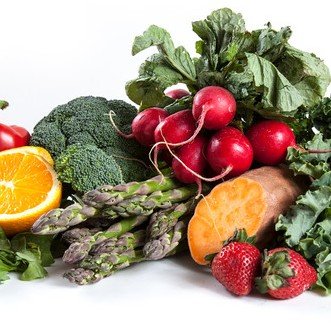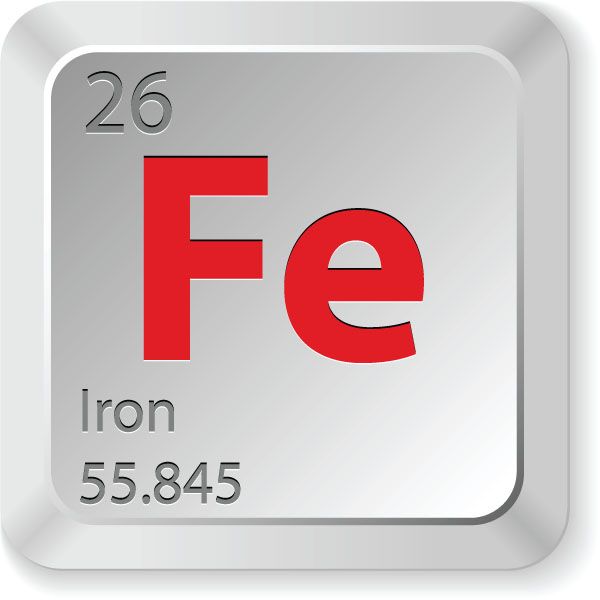Ever suffer from "too much choice" syndrome when it comes to choosing a diet? It's no wonder. From Atkins to Zone, and everything in between, there are lots of them to choose from! If you're still looking for the perfect diet this year, your search is over.
Here's our take on some of the most popular approaches.
1. The Whole30 Program®
If you're concerned about skin conditions, allergies, gut disturbances, or symptoms of whole-body inflammation, this diet might be for you. The concept behind Whole30 is to eat whole foods for 30 days while completely avoiding off-limits foods such as sugar, grains, dairy, legumes, alcohol, MSG, sulfites, and any "fake" treats recreated from approved ingredients.
For 30 days, you'll focus on eating meat, seafood, eggs, lots of vegetables, some fruit, and plenty of good fats from fruits, oils, nuts, and seeds. You'll avoid foods with ingredients you aren't familiar with (or can't pronounce) and choose whole foods without any "ingredients" except themselves.
Pros: You'll be eating healthy, nutrient-dense foods. And by encouraging you to avoid that big trigger point—looking at the scale—Whole30 might reduce your stress level, too.
Cons: Sounds good, but what happens on day 31? The Whole30 Program creators suggest you eat a "Whole30-ish" diet after completing your first 30 days, but to expect sugars, grains, dairy, and more to creep back into your diet.
Bottom line: Without helping you develop sustainable eating habits, this approach falls easily into the big bucket of endless variations on the "30-day challenge" theme.
2. The Zone Diet®
This diet is all about putting your body into a physiological state that discourages inflammation—into the "Zone." You know you're in it when you get good scores on blood tests for triglycerides, arachidonic acid (EPA or omega fats) ratio, and hemoglobin A1C levels (average blood glucose levels for the past three months).
When you get in the Zone, you'll be primed not only to fight inflammation but also to experience greater fat loss, enhanced exercise performance and cognitive function, and an increased state of wellness.
The Whole30 prioritizes food groups in the following order, from most to least important:
- Vegetables
- Fruits
- Low-fat proteins
- Monounsaturated fats
- Grains and starches
The idea is to build each meal using one-third low-fat protein, two-thirds colorful vegetables and some fruit, and a "dash" of monounsaturated fats such as olive oil, avocado, or nuts.
Pros: Like Whole30, the Zone Diet focuses on nutrient-dense foods and uses healthy eating behaviors such as portion control, moderation, and eating every few hours. Unlike Whole30, no foods are off limits.
Cons: Some people criticize the Zone Diet for telling people to avoid grains and starches thought to cause inflammation, while encouraging them to eat other foods (papaya, mango, grapes, raisins, bananas, etc.) that are sometimes thought to increase inflammation.
Bottom line: General confusion about the role some carbohydrates may play in inflammation can make it hard for some people to choose the right foods to include in their Zone diet.
3. The Paleo Diet
A paleo diet is a moderate-protein, higher-fat, low-carbohydrate diet that attempts to mimic the diet of our omnivorous hunter-gatherer ancestors during the Paleolithic era. It's based on eating naturally occurring food with little to no processing.
What You Can Eat
- Proteins: A paleo diet includes a lot of lean and fatty grass-fed meats including poultry, red meat, pork, organ meats, and eggs, as well as seafood and fish. Whether you include dairy foods depends on how strict your paleo principles are (after all, no one was milking dairy animals 2.5 million years ago).
- Carbohydrates: These are limited to fruits, vegetables, and tubers (potatoes, yams, taro root, jicama, and celery root). Grains such as rice and pasta, as well as beans and legumes, are excluded because they are processed foods.
- Fats: You can eat unsaturated and saturated fats including nuts, seeds, natural oils (olive, coconut, avocado), butter, and avocados. No peanut butter allowed, though; technically speaking, peanuts are legumes.
Pros: Normally, no snacks are allowed when going paleo. But paleo eating has gotten so popular that "paleo-approved" snacks are now available, including energy bars, and chips.
Cons: A super-low-carb approach can be tough. The most strenuous thing you do all day might be to get 300 grams of carbs from fruits, vegetables, and tubers alone! If you're doing two-a-day training or workouts longer than 90 minutes, good luck with this one.
Bottom line: Many people have no problem adjusting to a paleo diet. Others struggle mightily because they have to omit bread and pasta—not to mention peanut butter. Overly restrictive diets often lead to increased cravings for and binging on forbidden foods.
4. The Ketogenic Diet
A keto diet is very high-fat, moderate-protein, very low-carbohydrate, and breaks down like this:
- 70-75 percent of calories from fat
- 15-20 percent of calories from protein
- 5-10 percent of calories from carbohydrate
The diet's purpose is to get your body into ketosis, a state in which your body shifts its primary fuel source from glucose to fatty acids and ketone bodies. Your body (or, most bodies, I should say) has a nearly limitless supply of stored fats it can transform into energy-producing fatty acids and ketone bodies. Once you convince your body to essentially burn fat for energy, say hello to some major fat loss.
Pros: If you can get past the dreaded "keto flu" and survive the weeks it takes to enter ketosis, you'll experience outstanding weight loss and a positive effect on your blood cholesterol and triglyceride levels.
Cons: Getting past keto flu and into ketosis is hard. Why? Because of carbs. Eating even a small portion of carbs can knock you out of ketosis and put a giant "pause" on the benefits of this diet. And if you do knock yourself out of ketosis, it can take 3-5 days to get back into it.
Bottom line: Keto flu aside, a ketogenic diet may not give you the fuel you need to perform at your best. If your goal is improving rep PRs, 1RMs, or sprint times, this diet may not be ideal for you.
5. Intermittent-Fasting Diet
Intermittent fasting (IF) is the process of intentionally fasting (going without calories) for a set amount of time, typically at least 16 hours. Fasting as a fat-loss tool has been shown to increase the body's ability to break down fat, reduce body weight, and accelerate fat loss. Note that you must be in a caloric deficit to reap these benefits.
To date, there have been many versions of IF, but the most popular approaches include:
- LeanGains: 16 hours fasting, 8 hours feeding
- Warrior Diet: 20 hours fasting, 4 hours feeding
- Alternate-day fasting: 24 hours fasting, 24 hours feeding
Pros: Fasting can result in decreased body fat, improved blood cholesterol and triglyceride levels, and enhanced insulin sensitivity. Plus, not having to think about what you're going to eat next can reduce stress, and eating one giant meal a day can make you feel satisfied and fully satiated.
Cons: Long periods without nutrients, particularly protein, makes this a tough diet when you're trying to optimize muscle growth. IF may also lead to unhealthy and probably unsustainable binge-eating behavior as you focus on just one meal to meet all of your daily calorie goals.
Bottom line: When taken to the extreme, IF might not be the best way to go if you're very physically active. But it is possible to plan your daily meals so that you get all your nutrients by eating less often than the usual "three meals a day with snacks in between" approach.
Source: Whole30





